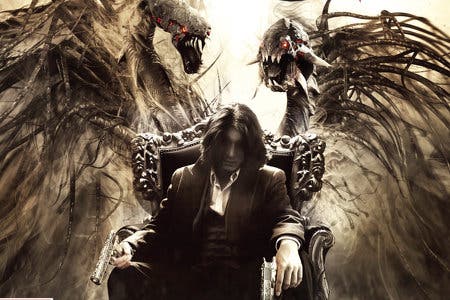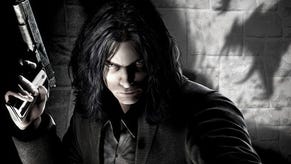Face-Off: The Darkness 2
Light-hearted fun.
| - | Xbox 360 | PlayStation 3 |
|---|---|---|
| Disc Size | 6.0GB | 6.04GB |
| Install | 6.0GB (optional) | - |
| Surround Support | Dolby Digital | Dolby Digital, 5.1LPCM, 7.1LPCM |
Featuring a range of impressive lighting and shader effects along with extensive use of post-processing, Digital Extremes' proprietary Evolution engine is a great fit for The Darkness 2, thanks in no small part to a superb cel-shaded art style that brings Top Cow's comic to life in a beautifully vibrant, violently gory manner. After the disappointments surrounding the PS3 version of the original game - with its sub-HD resolution, pared down effects and lower quality textures - the good news is that the standard of the cross-platform development work this time around is hugely improved: The Darkness 2 is very, very close on both consoles.
To be honest this isn't particularly surprising given that Digital Extremes' custom Evolution engine has clearly been optimised for both consoles for quite a while now. 2007's Dark Sector was an early example of impressive cross-platform conversion work done right; fairly closely matched in terms of performance, the main difference resting with the sub-HD framebuffer resolution of the PS3 game.
The Darkness 2 pushes both consoles thoroughly with an extensive range of visual effects. Dynamic light sources are scattered about the environments and post-processing is abundant throughout, making for an expansive range of impressive graphical effects. However, this all comes at a cost: there have been some compromises made on both consoles to accommodate these features while working within a 33ms rendering budget necessary to maintain a steady 30 frames per second update.
As our head-to-head video demonstrates, The Darkness 2 features a soft and visibly fuzzy appearance, pointing towards a sub-HD resolution being employed on both platforms to ease the rendering load - the side-effects of which are ever so slightly more noticeable on the PS3.
A closer inspection reveals that the blurriness of the image actually comes from the developers employing a post-process anti-aliasing solution on both formats - what looks like an implementation of NVIDIA's FXAA - combined with rendering the framebuffer out at 1152x600. The impact can easily be seen with geometry and texture details being smoothed over, while edges aren't as clean compared to a native resolution presentation using similar post-process based anti-aliasing techniques.
The Rise of FXAA
"Dynamic light sources are scattered about the environments and post-processing is abundant throughout, making for an expansive range of impressive graphical effects."
From what we gather, Digital Extremes appears to be using a tweaked version of FXAA3, first showcased on the programmer's blog last year. While it's impossible to confirm this with absolute authority, we know that coders at Digital Extremes were experimenting with the technique around the same time, and the way in which the final image is blurred strongly suggests that we are seeing something similar here. This would also explain the mild additional softness on the PS3 version: it most likely comes from the specific code path used to implement this form of FXAA on the console, which results in slightly less accurate edge-detection compared to the Xbox 360 implementation.
Using just 1.1ms of GPU time, FXAA would be a very good fit for the gritty, comic-book art style of The Darkness 2: fine details aren't quite so integral to the core look of the game, while the loss in image quality isn't quite so noticeable when roaming around the many dimly lit, low-contrast environments. That said, in brighter scenes the combination of the upscale blur plus overzealous edge-detection isn't so pleasing on the eye.
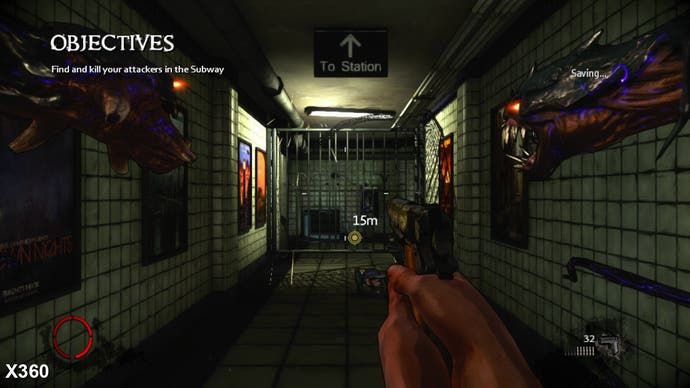
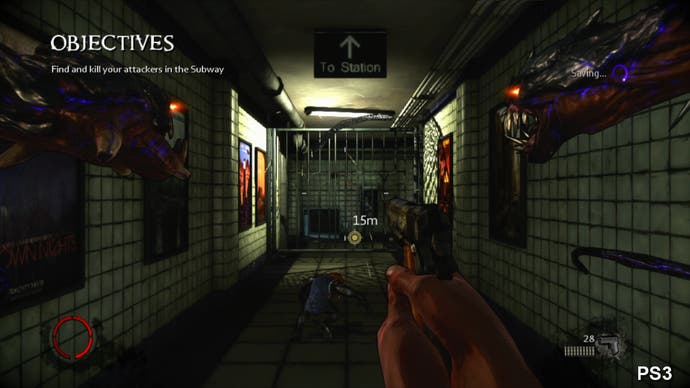
While the softness might disappoint some, the whole point of post-process AA is to free up precious rendering resources for other tasks - a worthwhile trade-off because the core gameplay is strongly influenced by certain aspects of the visuals. Take the lighting model for example: not only are there plenty of dynamic lights in play (these can be destroyed, or in some cases reactivated by enemies) but these also adds plenty of atmosphere to the game while forming an integral part of the gameplay - Darkness powers can only be used in low-light conditions, thus adding a interesting hook to the action.
Furthermore, as the camera approaches various light sources their intensity and exposure changes, with post-process distortion effects covering the screen. A bloom component is also present, which seamlessly decreases in strength and fades away when the camera moves in close, revealing previously hidden environmental details obscured by the lighting conditions. The use of HDR lighting and bloom is further complemented by the inclusion of light shafts, though some of these are static in nature and appear to be faked using transparent geometry in place of rendering true "god rays".
The good news is that these elements are largely identical across both platforms. In some scenes we find that bloom is dialled up slightly more on the PS3 release, while in others some of the light sources are stronger on the 360.
"Lighting, post-processing effects and artwork are match on both systems with only texture streaming differences separating the two console SKUs."
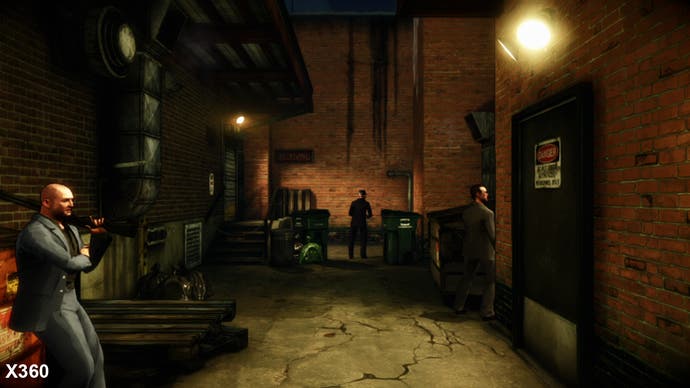

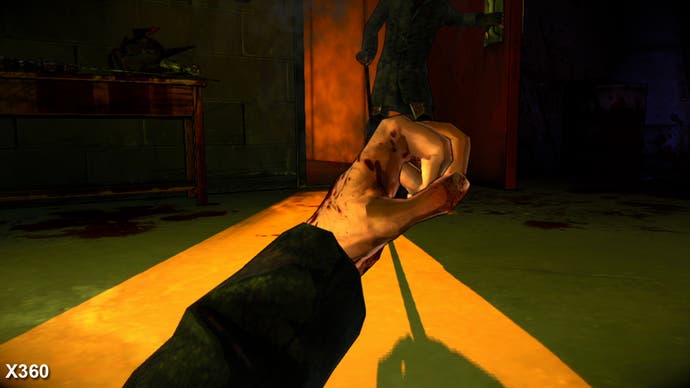
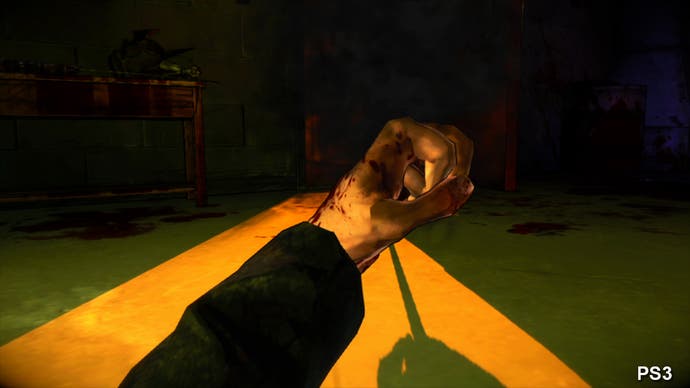
Elsewhere, shadows are rendered in a somewhat low resolution on both platforms, although in some circumstances they appear cleaner on the PS3 - filtering on the 360 looks to be done using a double penumbra, while PCF (percentage closer filtering) is present on the PS3. The shaper looking shadows in some shots on the PS3 is most likely down to the distance between the shadow-casting light source and the surface it's hitting being different, rather than any resolution differences. Additionally, the alpha buffers are rendered in the same resolution on both systems and the various post-processing elements that come into play are also a match.
Cross-Platform Conformity Taken to the Digital Extremes
Digital Extremes has obviously taken care to ensure that the core graphical make-up of the game on both systems is as close as possible, clearly designing the game from the ground up with considerations made for each platform to ensure a near-identical release. Artwork is essentially the same between the 360 and PS3, and there are no stray, pared-back textures on either platform to spoil the unique look of the game.
Streaming is the only element where we do see some differences between the consoles, with textures - and in some cases lighting - appearing first on Xbox 360. This is more noticeable at the beginning of each level, but occurs less obviously further into gameplay. On top of that, during gameplay, there also fewer transitions between texture changes on the 360 when the switch between mip-maps occur. The Darkness 2 doesn't feature a mandatory install on either platform, with the game streaming in assets directly from each console's disc drive, although an optional install is, of course, available on the 360. Usually we'd be inclined to believe that the difference in LOD (level of detail) transitions in this case is down to data being streamed faster from the 360's DVD drive compared to the same data being read from the Blu-ray on the PS3.
However, the fact that the PC game also has these issues on occasion suggests that there could be other issues in play: in this case most likely relating to how the game code and data flow is being handled along the rendering pipeline. Thankfully, during play the transitions between artwork are very minor once an area has loaded and don't negatively impact on the experience.
"There are some unintentionally hilarious bugs: enemies can clip through environmental objects, animations glitch, and sometimes they break entirely."

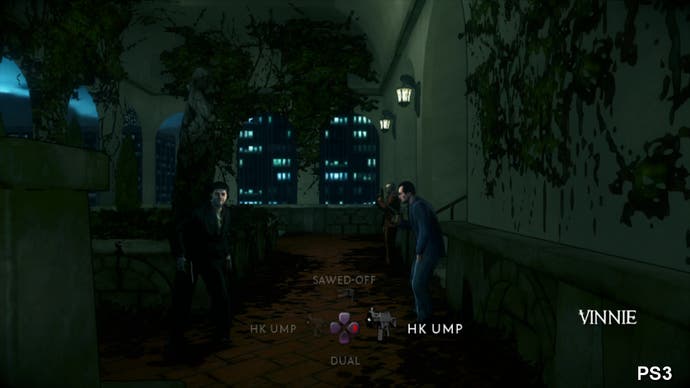
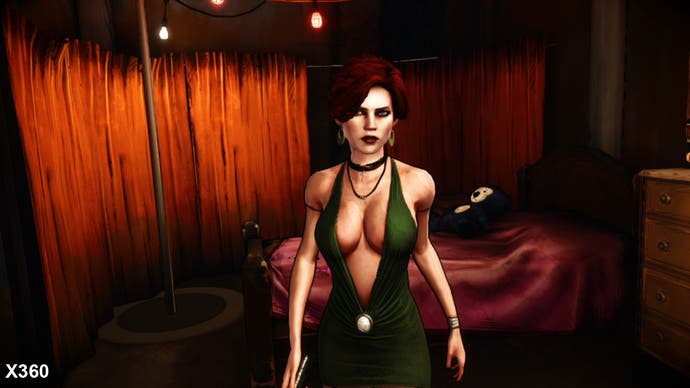

Despite the level of polish on offer with regards to the visuals, this doesn't always extend to other areas of the game. There are a number of bugs that occasionally crop up during play, and sometimes they are cause for some hilarity: enemies can clip through environmental objects, animations glitch, and sometimes they break entirely. While none of these are game-breaking they do serve to temporarily disconnect the player from being totally immersed in the action.
In terms of performance, a look at a series of gameplay clips show that Digital Extremes' Evolution engine runs very smoothly on both platforms with very few issues that are noticeable during gameplay. Occasionally the game drops below its intended 30FPS target on both formats, but by and large, they're like-for-like. In scenes where the engine is being pushed the PS3 version drops a few more frames a tad more often, but at the same time it does so with lower levels of screen tear.
Our analysis tools show that at times The Darkness 2 tears quite heavily in small bouts during stressful scenes, though not all that frequently. At the same time a great deal of this goes completely unnoticed when looking at the footage by eye. By choosing plenty of dark, low-contrast environments, the differences between frames can be very hard to spot, even when there is quite a lot of fast movement on screen. It's only in scenes in which light and dark objects occupy the same frame where the differences become apparent and the tearing becomes plainly visible - most notably, when the muzzle flash from large weapons is displayed on screen, which tends to cause the engine to render out multiple torn frames at time.
Interestingly, the PS3 version acquits itself better in this regard: we see the engine rendering more clean frames, resulting in improved image consistency. However, in all honesty the difference isn't really so apparent during gameplay and when tearing or frame-rate drops do become noticeable the engine quickly recovers, swiftly restoring a clean and smooth update.
Also displayed from a first-person perspective, cut-scenes are largely smooth and mostly free from tearing when there isn't much action going on, but as the load increases we see that frame-rates can drop visibly and screen tearing is introduced into the mix. Both formats are affected at similar points, and although the 360 commands a small lead in some scenes - particularly where frame-rate is concerned - in others there's little to separate the two at all.
"From a performance perspective, the Xbox 360 version tends to be smoother overall, but the PlayStation 3 game has lower levels of screen tear."
However, as these sequences aren't interactive at all the dip in performance has no impact on how well the game plays. Tearing, like during gameplay, is also hard to spot in dark scenes, and it's only on occasion where torn frames and frame-rate drops make things look displeasing to the eye, and then it's only for very short periods of time. Ultimately, outside of isolated issues in specific scenes, by and large things are generally rather solid overall.
Overall then, in terms of performance both versions are smooth and for the most part tearing isn't really an issue. During gameplay the PS3 has a very slight edge (hardly any tearing is present) while things are a tad smoother on the 360 when the engine is being pushed. In the end though, the differences are pretty minor in real world terms, and shouldn't really bother players engrossed in the action.
A PC The Action
While the console versions are pretty evenly matched, the PC platform offers up the enticing ability to improve upon the console releases in many respects. For one, dealing with sub-HD framebuffers is a non-issue, while higher-quality effects work can often enhance an already polished experience. But how what has Digital Extremes done to improve the PC release of The Darkness 2 over its console counterparts?
We start with our 720p Xbox 360 and PC head-to-head video, while an alternative PS3 vs. PC comparison video is also available for those interested in seeing how the Sony console shapes up against the computer version.
As expected, it's possible to run The Darkness 2 in native 720p although the advantage over the sub-HD console versions isn't quite so obvious are you might think, even factoring in that extra 33 per cent of resolution. The additional sharpness helps to improve texture clarity, but the slightly soft look that is present on both the 360 and PS3 is still there to a lesser degree. The PC version of The Darkness 2 also uses FXAA in lieu of regular MSAA, but the native 720p framebuffer means that there's slightly less blurring of texture details, and the overall effect works well with the game cell-shaded aesthetic. Certain art styles aren't disgraced by a drop to sub-HD resolutions when handled correctly, and The Darkness 2 demonstrates this rather nicely.
Curiously, FXAA is also permanently activated with no other edge-smoothing options available. Given that The Darkness 2 features a plentiful amount of dynamic light sources in play throughout, the locked use of FXAA indicates that a deferred lighting solution is in play in all three versions of the game. Regular MSAA generally doesn't play well with a deferred rendering set-up, owing to the massive RAM requirements, so implementing a high performance post-process effect makes sense.
"There are few surprises with the PC version - only really offering higher frame-rates and resolutions over the console builds."

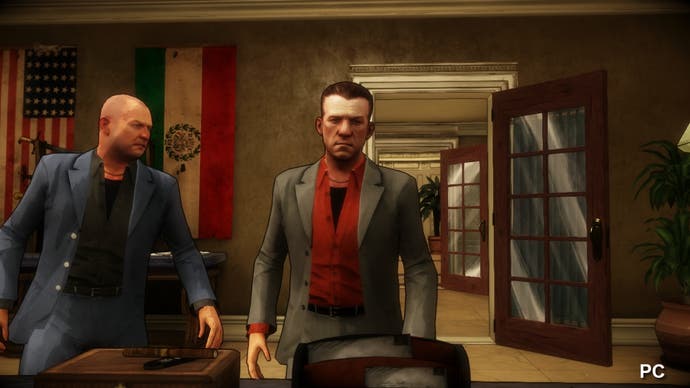

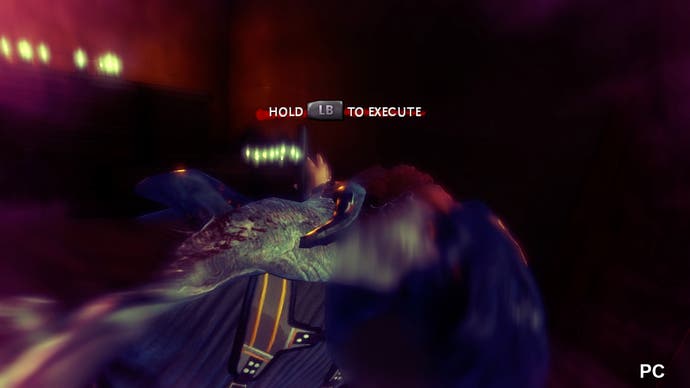
The ability to use native resolutions to match your display setup appears to be the most significant upgrade when looking at the PC game - that, and the ability to run the game at much higher frame-rates: we had no problem in hitting a near constant 60FPS in both 720p and 1080p with v-sync enabled on our Core i5 and GTX460 set-up. The crisp controller response and buttery smooth imagery certainly made the game more enjoyable to play. Both 360 and PS3 are plenty of fun, but the upgrade to full-fat 60FPS is always welcome.
However, this is clearly a game aimed at consoles and visual enhancements elsewhere are few and far between. For example, the core texture work is identical to the consoles; the main benefit here is that the leap in pixel precision afforded when rendering in higher resolutions than 720p reveals additional clarity with regards to the artwork, and more visible detail on distant surfaces due to the increased image sharpness. In other areas shadows are rendered in a higher resolution, and per-object motion blur is given a stronger, higher precision, implementation in some scenes.
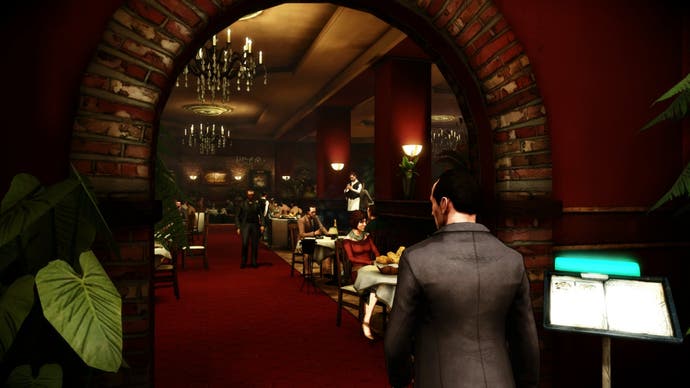

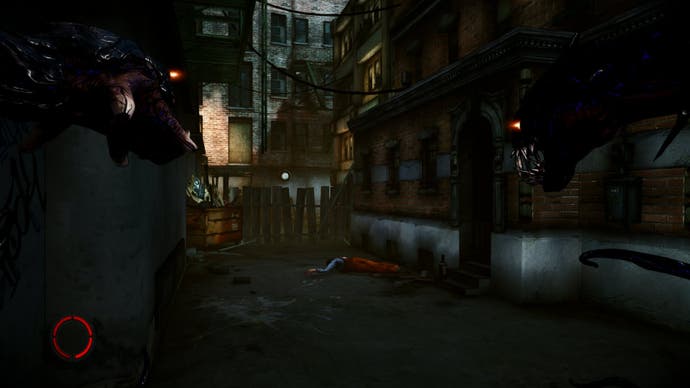
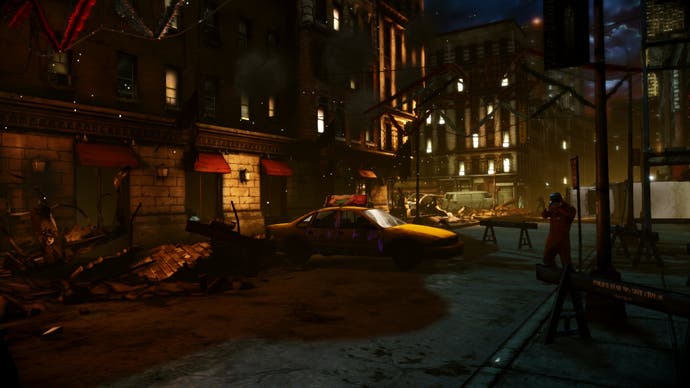
The Darkness 2: The Digital Foundry Verdict
All of these elements come together to form a more refined look to an already solid title. On top of that there's a real sense that playing in higher resolutions like 1080p brings out the very best the game has to offer graphically. If you've got the requisite hardware, the PC version of The Darkness 2 is clearly the one to get, but the good news is that the game still packs a hell of a punch on both consoles.
While not without its flaws, with The Darkness 2 Digital Extremes successfully takes the blueprint laid down by Starbreeze in the original, refining and expanding upon it, before putting its own unique stamp across this latest instalment. The stripped-down control scheme is a big improvement, allowing you to use your Darkness powers while shooting at the same time and the concept of using light as a gameplay mechanic is promising, though somewhat under-developed.
Despite this, the bloody-thirsty exploits of Jackie Estacado make for a rather enjoyable alternative to many other first-person shooters doing the rounds right now. In a market dominated by identikit action games, we feel that The Darkness 2 is well worth checking out.
